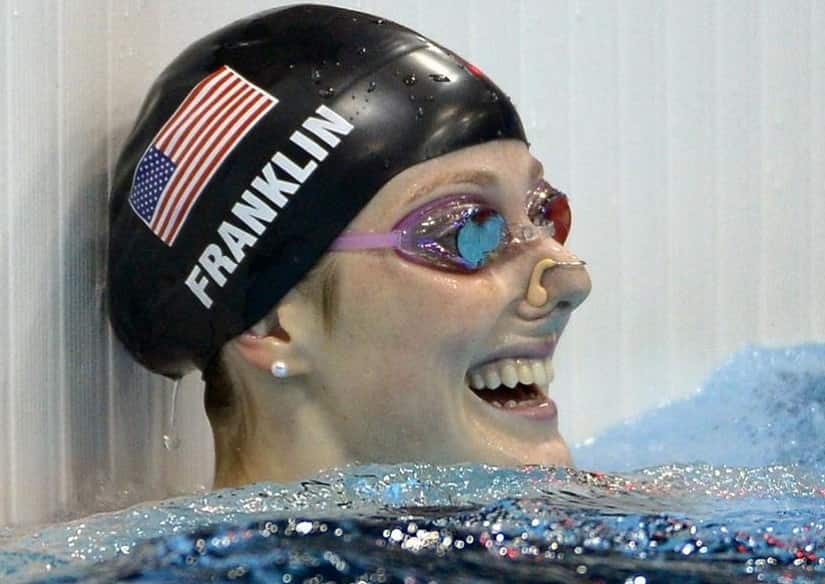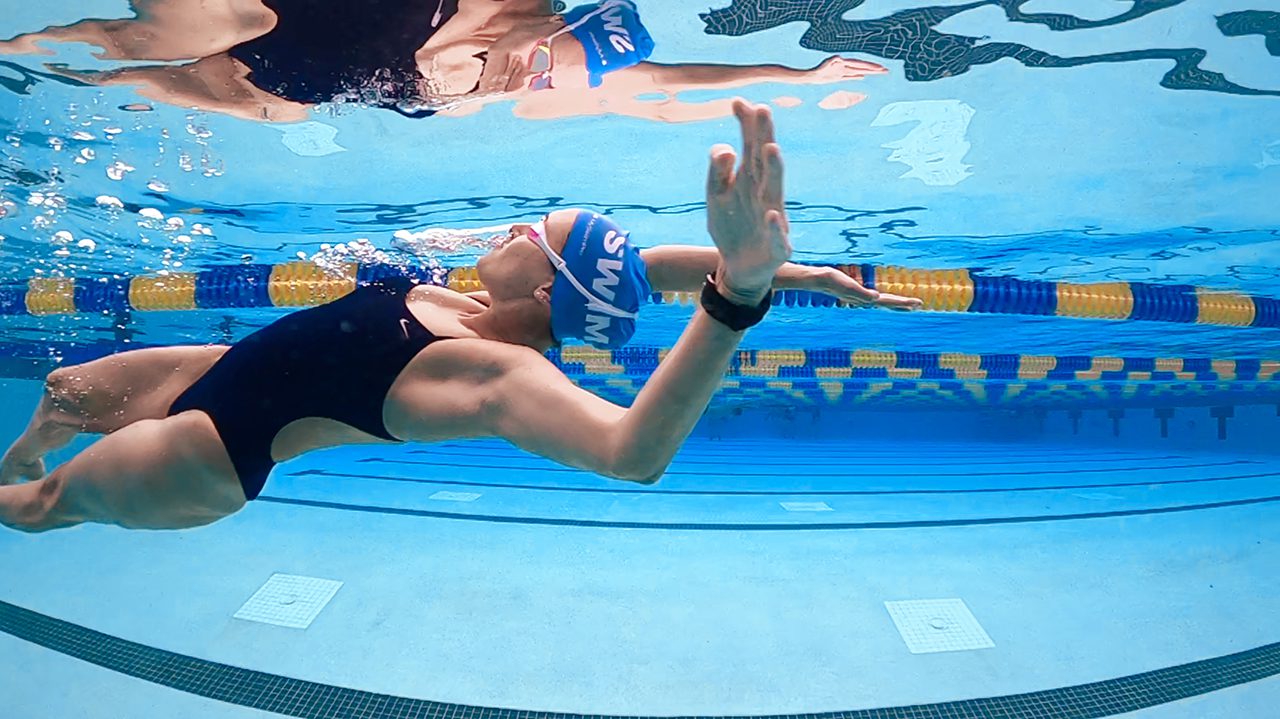Are you ready to dive into the world of backstroke swimming? In this comprehensive guide, we will unravel the techniques, benefits, and intricacies of this highly efficient swimming style. Whether you’re a beginner looking to improve your form or an experienced swimmer seeking to enhance your performance, mastering the backstroke is a skill worth honing. So, let’s jump in and explore the ins and outs of this graceful and powerful stroke.
The History of Backstroke Swimming: Tracing its Origins and Evolution
In order to truly appreciate the art of backstroke swimming, it is essential to delve into its rich history. Backstroke can be traced back to ancient times, with depictions of swimmers floating on their backs found in ancient Egyptian and Greek artwork. However, it wasn’t until the late 19th century that backstroke began to emerge as a distinct swimming style.
A significant milestone in the evolution of backstroke was the development of the “Trudgen” stroke by John Trudgen in the 1870s. This stroke involved a combination of arm movements, with one arm executing a double overarm pull while the other arm performed a regular sidestroke. Although the Trudgen stroke was eventually banned in competitive swimming, it laid the foundation for the modern backstroke technique.
As the sport continued to evolve, backstroke gained recognition and was officially included in the Olympic Games in 1900. Over the years, various modifications were made to improve efficiency and speed. Notably, the introduction of the “shoulder roll” technique in the 1930s revolutionized backstroke swimming by allowing swimmers to generate more power and maintain a streamlined body position.
Today, backstroke is a highly refined and technically demanding swimming style. It has become a staple in competitive swimming events, showcasing the skill and prowess of athletes worldwide. With its fascinating history and continuous evolution, backstroke remains a captivating discipline that continues to captivate swimmers of all levels.
Understanding the Basics: Body Position, Arm Movement, and Leg Action
Mastering the fundamentals is crucial for developing a strong backstroke technique. Let’s dive into the key elements that contribute to a successful backstroke.
1. Body Position:
Achieving the correct body position is paramount in backstroke swimming. Lie flat on your back with your body aligned horizontally in the water. Keep your head in a neutral position, eyes focused on the ceiling or sky. Engage your core muscles to maintain a stable and streamlined body position throughout the stroke.
2. Arm Movement:
The arm movement in backstroke involves an alternating motion. As one arm extends forward, the other arm sweeps backward in a semicircular motion. When the arm reaches the hip, initiate the recovery phase by lifting it out of the water and extending it back to the starting position. Maintain a steady and rhythmic arm movement to maximize propulsion.
3. Leg Action:
Efficient leg action plays a vital role in backstroke swimming. Your legs should execute a flutter kick, with your toes pointed and legs straight. Generate power from your hips, allowing your legs to kick in an up-and-down motion. Avoid excessive knee bending or wide leg movements, as they can hinder your speed and efficiency in the water.
By focusing on these fundamental aspects of backstroke swimming, you can establish a solid foundation for further skill development. Practice these techniques with patience and precision, and you’ll be well on your way to becoming a proficient backstroke swimmer.
Perfecting Your Backstroke Technique: Tips and Drills for Improved Performance
Refining your backstroke technique is essential for maximizing your performance in the water. Here are some valuable tips and drills to help you perfect your backstroke:
1. Focus on Rotation:
A proper shoulder rotation is crucial for an efficient backstroke. As your arm enters the water, initiate a slight roll of your body to the opposite side, allowing your shoulder to lead the way. This rotation helps increase your reach and power during each stroke cycle.
2. Develop a Strong Kick:
Your kick plays a significant role in propelling you forward. To improve your kick, incorporate kickboard drills into your training routine. Focus on maintaining a steady and consistent flutter kick, ensuring that your legs remain close together with minimal splashing.
3. Enhance Arm Recovery:
The recovery phase of your arm movement should be smooth and efficient. Practice drills that emphasize a relaxed and controlled recovery, allowing your arm to glide effortlessly over the water’s surface. Avoid unnecessary tension or excessive splashing during this phase.
4. Utilize Underwater Dolphin Kicks:
To gain an extra burst of speed during backstroke, master the technique of underwater dolphin kicks. As your arms recover, execute a series of powerful dolphin kicks, propelling yourself forward underwater. This technique is particularly effective during starts and turns.
By incorporating these tips and drills into your training regimen, you can fine-tune your backstroke technique and elevate your performance to new heights. Remember to practice consistently and seek feedback from coaches or experienced swimmers to further refine your skills.
Common Mistakes to Avoid: Troubleshooting Your Backstroke Form
Even the most experienced swimmers can fall into bad habits or make common mistakes in their backstroke technique. By identifying and correcting these errors, you can significantly improve your form and overall performance. Here are some common mistakes to watch out for:
1. Sinking Hips:
One of the most prevalent mistakes in backstroke is allowing your hips to sink too low in the water. This can create drag and hinder your forward momentum. Focus on engaging your core muscles and maintaining a horizontal body position to keep your hips at the water’s surface.
2. Crossing Arms:
Some swimmers have a tendency to cross their arms over their body during the recovery phase. This can lead to inefficient arm movement and reduce your stroke’s power. Ensure that your arms follow a straight and parallel path, entering and exiting the water at shoulder-width apart.
3. Overkicking or Underkicking:
Striking the right balance with your kick is crucial in backstroke. Overkicking with large, exaggerated movements can cause excessive splashing and waste energy. On the other hand, underkicking with weak leg action can result in reduced propulsion. Aim for a steady, moderate flutter kick that complements your arm movements.
4. Incorrect Head Position:
Keeping your head tilted too far back or too far forward can disrupt your body’s alignment and affect your stroke efficiency. Maintain a neutral head position, with your eyes focused straight up or slightly forward to maintain a streamlined body position.
By being aware of these common mistakes and actively working to correct them, you can refine your backstroke technique and enhance your overall swimming performance. Remember, practice and attention to detail are key to overcoming these challenges and swimming with improved form.
Advanced Backstroke Techniques: Exploring Underwater Dolphin Kicks and Shoulder Rotation
For those looking to take their backstroke to the next level, incorporating advanced techniques can greatly enhance your speed and efficiency in the water. Let’s delve into two key techniques: underwater dolphin kicks and shoulder rotation.
1. Underwater Dolphin Kicks:
Mastering the art of underwater dolphin kicks can give you a significant advantage in backstroke races. After completing your arm pull, submerge yourself underwater and execute a series of powerful dolphin kicks. This undulating motion generates propulsion and allows you to maintain your speed during transitions and turns. Practice proper timing and coordination between your arm strokes and kicks to maximize the effectiveness of this technique.
2. Shoulder Rotation:
To enhance your arm pull and increase your stroke power, focus on incorporating shoulder rotation into your backstroke. As your arm enters the water, initiate a slight rotation of your body to the opposite side, allowing your shoulder to lead the movement. This rotation allows for a longer and more powerful stroke, enabling you to generate more propulsion and maintain a streamlined body position. Practice drills that specifically target shoulder rotation to improve your execution and efficiency.
It’s important to note that mastering these advanced techniques requires practice, patience, and guidance from experienced coaches or instructors. Gradually incorporate them into your training sessions, focusing on proper form and technique. With dedication and persistence, you can unlock the full potential of your backstroke and elevate your swimming performance to new heights.
Developing Strength and Endurance for Backstroke: Dryland Exercises and Training Regimens
Building strength and endurance is essential for excelling in backstroke swimming. In addition to pool training, incorporating dryland exercises can help improve your overall fitness and performance. Let’s explore some effective exercises and training regimens to enhance your backstroke:
1. Core Strength:
A strong core is crucial for maintaining stability and generating power in backstroke. Incorporate exercises such as planks, Russian twists, and flutter kicks to target your abdominal muscles, obliques, and lower back. Strengthening your core will improve your body position and enhance your stroke efficiency.
2. Upper Body Strength:
Developing upper body strength is vital for a powerful backstroke. Include exercises like pull-ups, lat pulldowns, and bent-over rows to strengthen your back, shoulders, and arms. These exercises will improve your pull phase and overall stroke power.
3. Cardiovascular Endurance:
Backstroke races require sustained cardiovascular endurance. Incorporate aerobic exercises like swimming, running, cycling, or rowing into your training regimen. Aim for longer durations at a moderate intensity to build your stamina and improve your ability to maintain a consistent pace throughout a race.
4. Flexibility and Mobility:
Improving flexibility and mobility can enhance your range of motion and contribute to a more fluid backstroke technique. Incorporate stretching exercises that target your shoulders, hips, and back. Consider activities like yoga or Pilates to improve your overall flexibility and body alignment.
Design a well-rounded dryland training program that includes a mix of these exercises and regimens. Consult with a qualified trainer or coach to tailor the program to your specific needs and goals. By incorporating dryland exercises into your training routine, you can enhance your physical strength, endurance, and overall performance in backstroke swimming.
Backstroke vs. Other Swimming Styles: A Comparative Analysis
Backstroke is just one of the four major swimming styles, each with its own unique characteristics and techniques. Let’s compare backstroke to other popular swimming styles and explore their similarities and differences:
1. Freestyle (Front Crawl):
Freestyle, also known as front crawl, is characterized by its continuous alternating arm movements and flutter kick. Unlike backstroke, freestyle is swum on the stomach, with the face in the water. Both backstroke and freestyle rely on rhythmic arm and leg coordination, core engagement, and a streamlined body position.
2. Breaststroke:
Breaststroke is distinct from backstroke in terms of its arm and leg movements. Breaststroke involves a simultaneous arm pull followed by a frog-like kick. Unlike backstroke, breaststroke requires a coordinated glide phase and the head remains above the water throughout the stroke cycle.
3. Butterfly:
Butterfly is perhaps the most physically demanding swimming style. It features a symmetrical arm movement known as the “butterfly pull” and a dolphin kick. Unlike backstroke, butterfly requires simultaneous arm movement and an undulating body motion. Both backstroke and butterfly require a strong core, good body control, and precise timing.
While backstroke shares some similarities with other swimming styles, it has its own distinct characteristics that make it a unique discipline. Understanding the similarities and differences between backstroke and other styles can help you appreciate the diversity of swimming techniques and choose the style that best suits your preferences and abilities.
The Importance of Breathing: Strategies for Efficient Oxygen Intake in Backstroke
Breathing is a critical aspect of backstroke swimming, as it ensures a steady supply of oxygen to fuel your muscles and maintain your performance. Let’s explore the importance of proper breathing techniques and strategies for efficient oxygen intake in backstroke:
1. Rhythmic Breathing:
Establishing a consistent breathing pattern is key to maintaining a steady rhythm in backstroke. Most swimmers prefer to breathe every other stroke, allowing them to alternate between the left and right sides. Find a breathing pattern that works for you and practice maintaining a steady rhythm throughout your swim.
2. Timing:
Timing is crucial when it comes to breathing in backstroke. Ideally, you should start your breath as soon as your recovering arm exits the water and your body starts to rotate. This allows for a smooth and efficient inhalation without disrupting your stroke rhythm or body position.
3. Head Position:
Keeping your head in the correct position is vital for effective breathing in backstroke. As you rotate your body, slightly lift your chin toward the chest to clear the water’s surface. Avoid lifting your head excessively, as it can disrupt your body alignment and increase drag.
4. Exhalation:
Proper exhalation is often overlooked in backstroke, but it is just as important as inhalation. Exhale continuously and steadily through your mouth or nose while your face is in the water. This ensures efficient exchange of gases and prepares you for a quick inhalation during the breathing phase.
By focusing on these breathing strategies and techniques, you can optimize your oxygen intake, enhance your endurance, and maintain a smooth and efficient backstroke. Practice these skills during your training sessions and gradually incorporate them into your swim routine for improved performance in the water.
Backstroke Racing Strategies: Tactics to Gain the Competitive Edge
When it comes to backstroke racing, employing effective strategies can give you a competitive advantage over your opponents. Let’s explore some key tactics to enhance your backstroke racing performance:
1. Fast Starts:
A powerful and streamlined start sets the tone for a successful backstroke race. Practice your backstroke starts to ensure a quick and explosive push-off from the wall. Maintain a tight streamline position and execute crisp underwater dolphin kicks to maximize your initial speed.
2. Tempo Control:
Controlling your stroke tempo is crucial in backstroke racing. Find a pace that allows you to maintain consistency throughout the race without sacrificing speed. Avoid starting too fast and burning out early or starting too slow and struggling to catch up. Practice maintaining a steady stroke rate during training to develop a good sense of tempo.
3. Strategic Turns:
Efficient turns are vital in backstroke racing. Approach the wall with a strong and controlled backstroke arm pull, followed by a swift rotation onto your stomach. Execute a powerful underwater dolphin kick off the wall to maximize your propulsion and maintain momentum during each turn.
4. Strong Finish:
Finish the race with a burst of speed and determination. As you approach the wall for the final touch, increase your stroke rate and kick intensity to give it your all. Practice sprinting the final meters of your backstroke races during training to build your finishing strength and endurance.
By incorporating these racing strategies into your backstroke training and races, you can gain a competitive edge and improve your chances of achieving your goals. Experiment with different tactics, analyze your performance, and adapt your strategy based on the specific race conditions and competition level. Remember, consistent practice and attention to race strategies can make a significant difference in your backstroke racing performance.
Benefits of Backstroke Swimming: Enhancing Fitness, Flexibility, and Posture
Backstroke swimming offers numerous benefits that go beyond its competitive nature. Let’s explore how incorporating backstroke into your swimming routine can improve your overall fitness, flexibility, and posture:
1. Full-Body Workout:
Backstroke engages multiple muscle groups simultaneously, providing a comprehensive full-body workout. It targets your back, shoulders, core, arms, and legs, helping to build strength, endurance, and overall muscle tone.
2. Cardiovascular Fitness:
Backstroke is an excellent cardiovascular exercise that elevates your heart rate and improves cardiovascular health. Regular backstroke swimming can increase your lung capacity, enhance oxygen utilization, and boost overall cardiovascular fitness.
3. Joint-Friendly Exercise:
Unlike high-impact activities, backstroke swimming is a low-impact exercise that puts minimal stress on your joints. This makes it a suitable exercise for individuals with joint conditions or those recovering from injuries.
4. Improved Flexibility:
Backstroke requires a high degree of flexibility, particularly in the shoulders and hips. Regularly practicing backstroke can help improve your range of motion, enhance flexibility, and reduce the risk of muscle imbalances and stiffness.
5. Posture Correction:
Swimming backstroke can help correct poor posture caused by sedentary lifestyles or desk-bound jobs. The constant extension of the spine and engagement of the back muscles in backstroke swimming can contribute to better posture alignment over time.
By incorporating backstroke into your swimming routine, you can reap these incredible benefits and improve your overall physical health and well-being. Whether you swim competitively or simply enjoy recreational swimming, backstroke offers a rewarding and effective way to stay fit and maintain a healthy lifestyle.
In conclusion, mastering the art of backstroke swimming can greatly enhance your swimming abilities and overall fitness. By understanding the history, techniques, and advanced strategies of backstroke, you can refine your form and improve your performance in the water. From perfecting your body position and arm movement to incorporating advanced techniques like underwater dolphin kicks and shoulder rotation, there are endless opportunities for skill development and improvement.
Additionally, focusing on dryland exercises, such as core strength training and cardiovascular endurance workouts, can further enhance your backstroke swimming abilities. Moreover, comparing backstroke to other swimming styles provides valuable insights into the diversity and uniqueness of each technique.
Remember to pay attention to breathing techniques, implement effective racing strategies, and reap the numerous benefits that backstroke swimming offers, including improved fitness, flexibility, and posture. Whether you swim for competition or leisure, backstroke is a versatile and rewarding swimming style that can contribute to your overall health and well-being.
So, dive into the world of backstroke swimming, embrace the challenges, and enjoy the journey of becoming a proficient backstroke swimmer. With consistent practice, dedication, and a focus on continuous improvement, you can unlock your full potential and make a splash in the water.

As a passionate water enthusiast, I’ve spent my life exploring the depths of swimming and sharing my experiences with the world. Stroke Swimming is more than just a blog; it’s a deep dive into the world of swimming. Here, you’ll find a treasure trove of information, tips, and insights to help both beginners and seasoned swimmers enhance their skills, knowledge, and appreciation for this timeless art.





